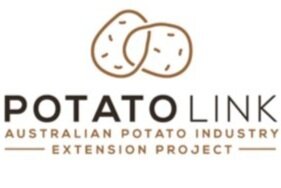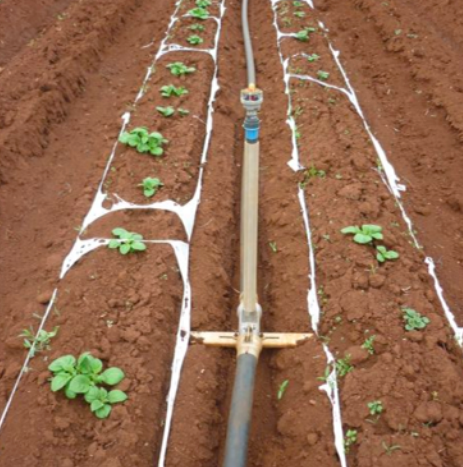Exploring Spongospora suppressive soils in potato production
The diseases caused by Spongospora subterranea (tuber powdery scab and root hyperplasia) can cause significant yield and quality loss. Not all soils are equally susceptible to this disease. This 2020 report determined factors that resulted in Spongospora suppressive soils in New Zealand.
Potato stakeholder needs analysis and extension strategy development
This Hort Innovation report goes into a needs analysis of the potato industry. It highlights that there is a need for strong extension and communication programs. It also develops a strategy and implementation plan that could be used to meet those needs.
Navigating the wealth of soil health information and identification of opportunities
This Hort Innovation report covers the current state of knowledge of soil health, with the use of over 220 references from both Australian and international sources. This report also covers various workshops media articles, videos and a factsheet associated with soil health in potato production.
Monitoring psyllids and psyllid predators in Australian potato crops
This Monitoring Psyllids and Psyllid Predators in Australian Potato Crops report by Tasmanian Institute of Agriculture (TIA) and Hort Innovation covers the different psyllid populations found and the levels of psyllid predators present.
Spongospora infection of potato roots – ecology, epidemiology and control
Powdery Scab, caused by Spongospora subterranea, is a costly blemish disease. This 2018 report delves into novel detection and mitigation strategies. Both greenhouse and field trials were undertaken. This report has provided a great source of knowledge for the ongoing battle with Spongospora.
Review bacterial Blackleg disease and R&D gaps with a focus on the potato industry
This 2018 report looks at the available literature and information regarding species present in Australia. It also investigates the accessibility of accurate diagnostic tests.
National governance framework for Australian seed potato certification: An options paper
This Hort Innovation report presents different options that could be taken to develop a national framework to guide seed potato certification.
Spatial variability in potato cropping to improve yield and production efficiency
Using modern sensor technology high levels of data can now be gathered from crops as they grow. This 2016 report explores how this data can be assessed to gain a greater understanding of productivity in different parts of a paddock. This project is a crucial step towards site specific crop management for the potato industry.
Heritage potato collection
This Hort Innovation report covers the efforts made to maintain a large bank of different potato varieties, and what they are good for. Specific focus was made on viral resistance, disease resistance, specific gravity and various cooking factors. Potatoes from Europe to America are included in this potato bank.
Evaluation and demonstration of degradable polyethylene film on Tasmanian processing potato crops
A three-year project in Tasmania was conducted on the potential benefits of using degradable polyethylene films in potato crops. This 2013 report found there was limited benefit to nitrogen fertiliser savings and yield but instead may allow for early harvest and some water saving.
National potato breeding Program: Strategic trait development
This Hort Innovation report explores the genetics behind breeding new varieties of potatoes. The report looks into developing genetic analysis tools to improve cultivar selection and development. With a focus on improving resistance to potato cyst nematodes and potato virus Y this 2012 paper provides great insight into how new cultivars are chosen.
Crop management tools for the South Australian french fry industry
During the 1990s the SA processing potato industry expanded rapidly, developing a range of crop monitoring and management tools. This 2006 Hort Innovation report refines and brings these together, with specific information on plant nutrition, pest and disease management and irrigation.
Supply chain handling systems for premium potatoes
This 2005 Hort Innovation study involved a survey of packers, supply chain monitoring and storage trials. Storage and transport temperatures ranged from 4C to ambient, with washed potatoes more likely to be cooled that brushed or dirty potatoes.
Monitoring and developing management strategies for soil insect pests of potatoes
Soil insects are difficult to detect and can cause blemishes on potatoes that may reduce quality. This 2005 Hort Innovation report sets out guidelines on monitoring soil insects and potential management strategies that could be implemented.
Enhanced detection of potato cyst nematode and bacterial wilt to improve market access for the Australia and New Zealand Potato Industries
This 2004 report goes into the detection of potato cyst nematodes (Globodera rostochiensis) through DNA analysis. It also delves into different diagnostic tools that can be used to determine the presence of bacterial wilt (brown rot caused by Ralstonia solanacearum).
Potato tuber quality management in relation to environmental and nutritional stress
This 2004 report delves into the causes and management strategies for the potato tuber internal disorder brown fleck. The relationship between potential yield and brown fleck incidence is explored along with some management options that can be implemented to reduce incidence of the disorder
Nitrogen dynamics in commercial seed potato crops and its effect on seed yield, quality, storage and subsequent commercial crop performance
This 2003 report proposes guidelines on site-specific nitrogen management using ‘real-time’ monitoring tools. By looking at plant, stem and tuber numbers, yield, tuber size and quality and previous paddock history the impact of nitrogen on a seed crop was determined.
Effect of Calcium Nutrition on Decay of Summer Sown Seed Potatoes
This 2003 report found the most common cause of decay was identified as bacterial soft rot (Erwinia carotivora). Calcium fertiliser levels and tuber calcium content was explored in this report alongside the importance of sourcing clean certified seed.
Managing bacterial breakdown in washed potatoes
This 2003 paper by SA Research &Development Institute delves into the postharvest washing of potatoes to find where bacterial soft rot originates and where it develops. The report suggests some ways in which soft rot causing bacteria can be controlled in this process.
Improved herbicide management for increased yield and quality
Read this 2002 report on herbicide use. The three year Australian study covers herbicide breakdown, residual herbicide effects on future crops and much more.
















